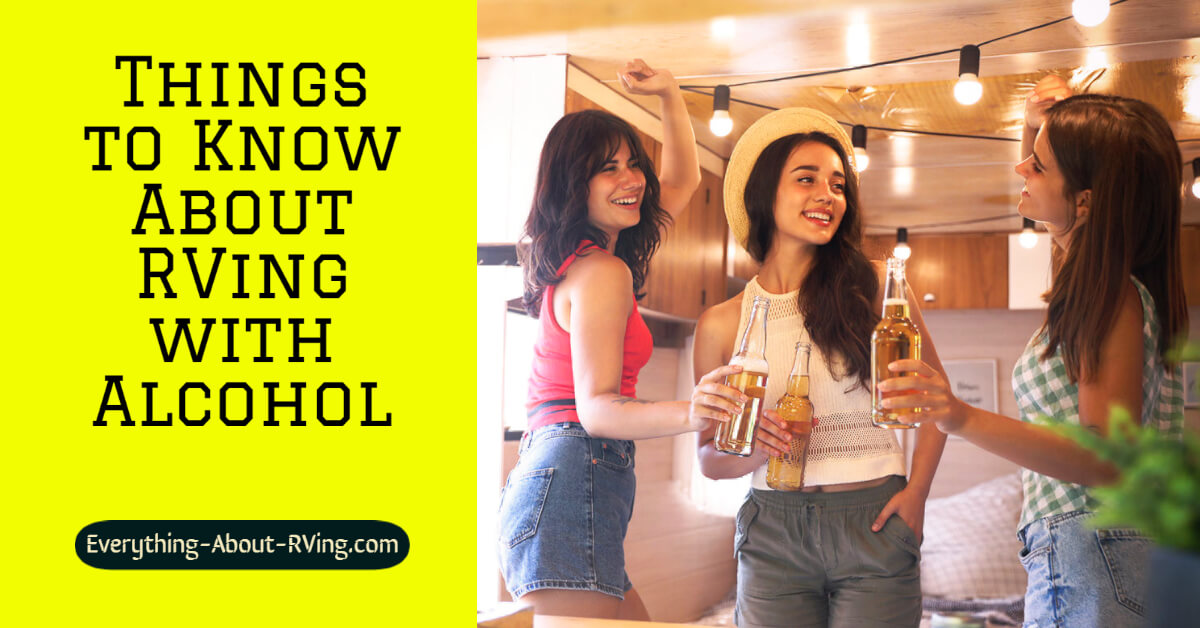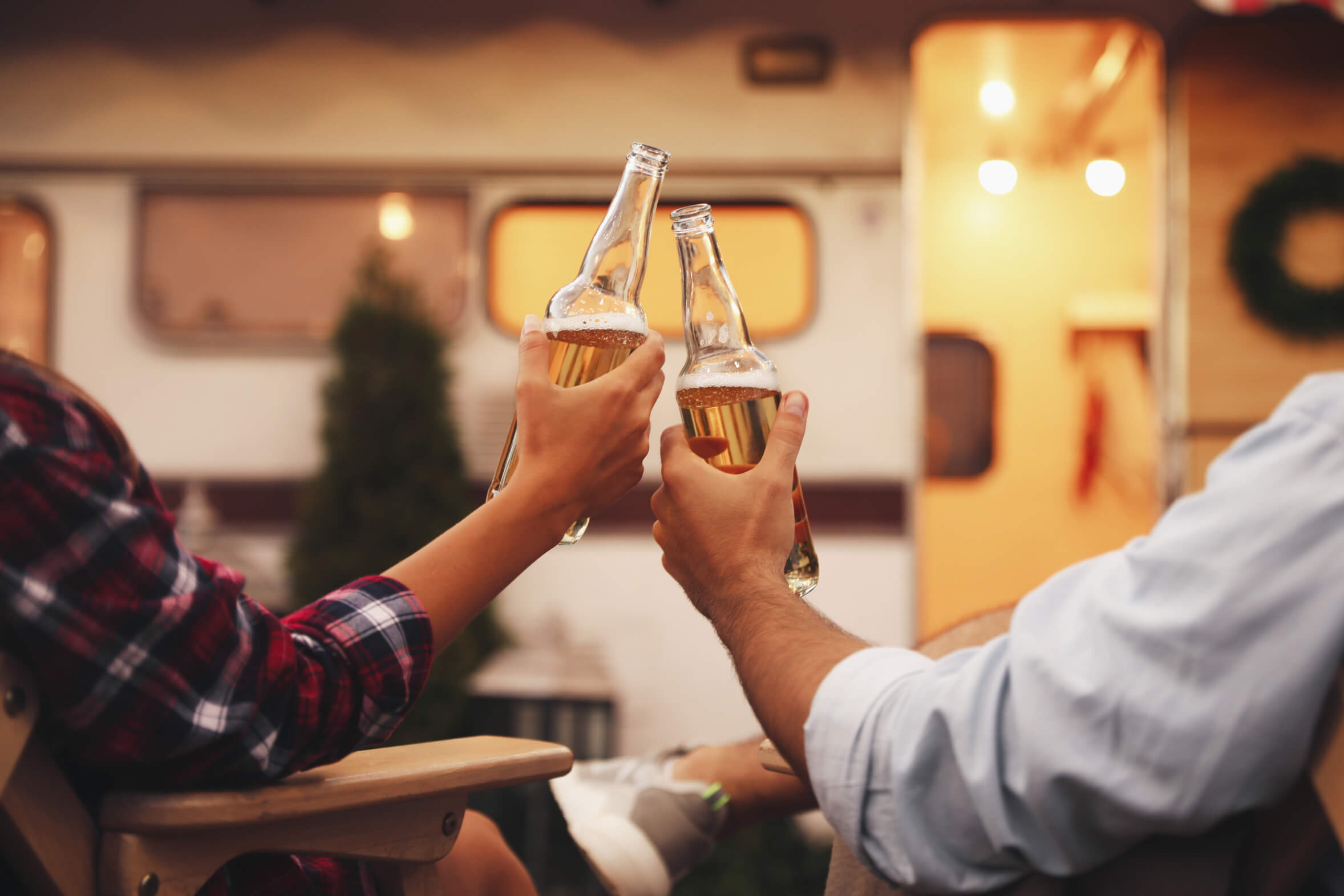- Home Page
- RVing Tips & Tricks
- Rving With Alcohol
Things to Know About RVing with Alcohol
Things to Know About RVing with Alcohol
Taking your RV to tour the country sounds attractive. You’ll probably be going with a partner, family, or friends. What if you feel like having a beer or two while on the move? This guide covers all things you should know about RVing with alcohol. Check out how to behave as a driver or passenger to ensure you comply with relevant regulations!
Can You Drink Alcohol in a Motorhome or RV?
For example, in California, the California Vehicle Code states that the driver can't consume alcohol while behind the wheel. Apart from when the vehicle is in motion, drivers also can't drink when the RV is parked. It doesn't matter if they are in the driving or living area. The only exception when you can drink as a driver is if you park the RV in a private location. Any occupant of the RV can drink freely in those situations. The only consideration is that the driver will need to be within the allowed BAC (Blood Alcohol Concentration limits} once they get behind the wheel again.
Can You Have an Open Container of Alcohol in an RV?
The same laws apply to open containers in regular automobiles and RVs. According to VC Section 23226, it’s illegal to keep an open can, bottle, or any other form of alcoholic beverage in the driver’s area. Even if you store it away in the passenger compartment, it’s still illegal if some of the bottle’s contents have been removed. Even if you haven’t touched the alcohol, the police can still cite you. In those situations, you might reduce the sentence with the help of a DUI lawyer.
The VC Section 23229 specifies that keeping an open container is legal in the living quarters of your RV. So, if you have open alcohol, make sure it's in the living area.
Can You Drink in an RV as a Passenger?
Passengers can’t drink in the driving area while the RV is in motion. They can’t even have an open alcohol container in this area and not even put it in the passenger’s compartment. On the other hand, passengers can drink in an RV if they are in the living quarters. That’s an exemption offered by VC Section 23229.
Does the RV’s Size Matter for Drinking Laws?
In California, the RV size isn’t relevant for applicable drinking laws. Furthermore, that’s the case in most states. Only Louisiana and Florida have regulations that require the RV to be at least 21 feet long if passengers want to drink in the living area while the RV is moving.
Are You Allowed to Sleep in an RV Drunk?
The critical thing to pinpoint is that a campervan, motorhome, or RV aren’t considered to be a vehicle when parked. Instead, they become your living area. That means you shouldn’t have a problem drinking and falling asleep while under the influence of alcohol.
On the other hand, it largely depends on where you park. If you find a private campsite, you can relax and have as many drinks as you want. It’s okay to sleep through the night, and the only thing to ensure is that you are sober once you need to drive again.
RV Parked in a Bar’s Parking Lot: Can You Get a DUI?
The regulations aren’t perfectly clear when it comes to parking your RV in a bar’s parking lot. The same applies if you choose a rest area by the highway or another road, or any other public place.
In these situations, the main problem is that nobody can guarantee you won’t leave the parking lot and drive the vehicle while drunk. So, if the police control your parked RV in a bar’s parking lot, they can claim you are breaking the law. If you want to be on the safe side, you should stay within the allowed BAC levels.
Do Alcohol Use Laws Differ by State?
The US has 50 states, and their regulations can vary significantly. As for the DUI laws and regulations regarding using alcohol while driving, here are some interesting facts:
- The federal government imposed that up to .08 is the acceptable BAC (blood alcohol content) level for all drivers.
- Zero-tolerance BAC applies to drivers younger than 21. This limit is .02 in California, but it's .00 in Illinois, Arizona, and some other states.
- The enhanced BAC level qualifies you for worse penalties. It means you are under severe intoxication. It varies from .15 to .20, and it’s at .16 in California.
- California doesn't require jail time for the first-time offenders who had a higher BAC than allowed. However, jail time is mandatory if you break this law in Georgia, Tennessee, and some other states.




